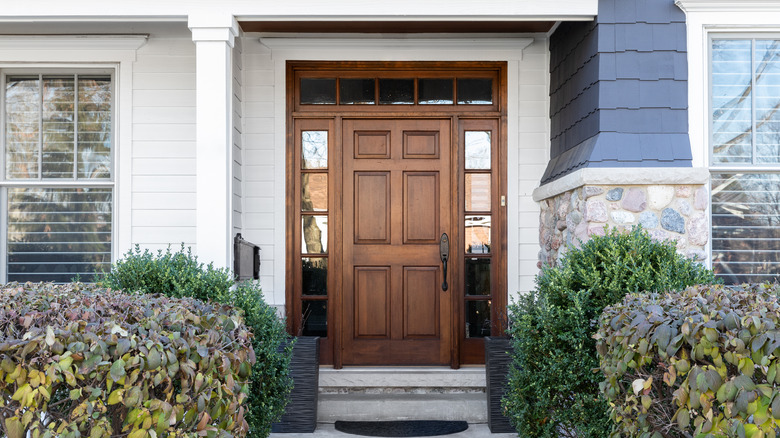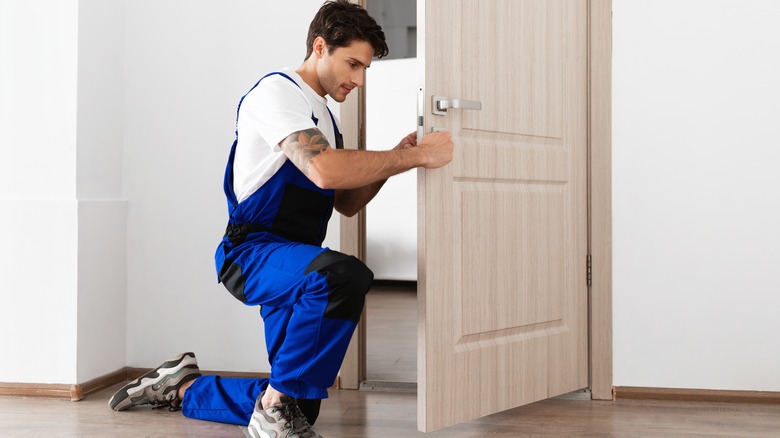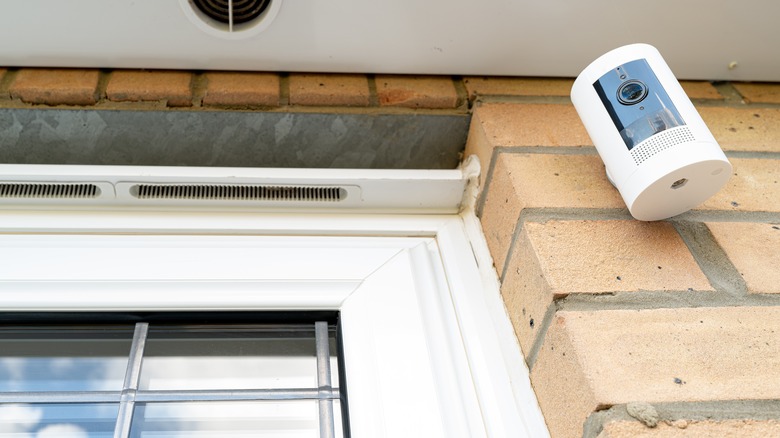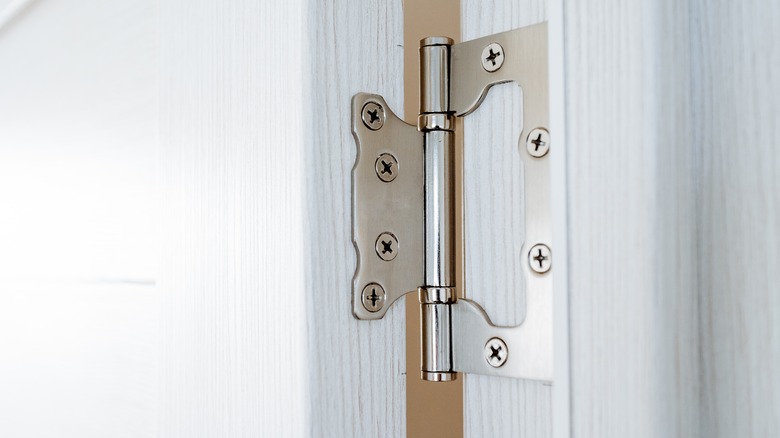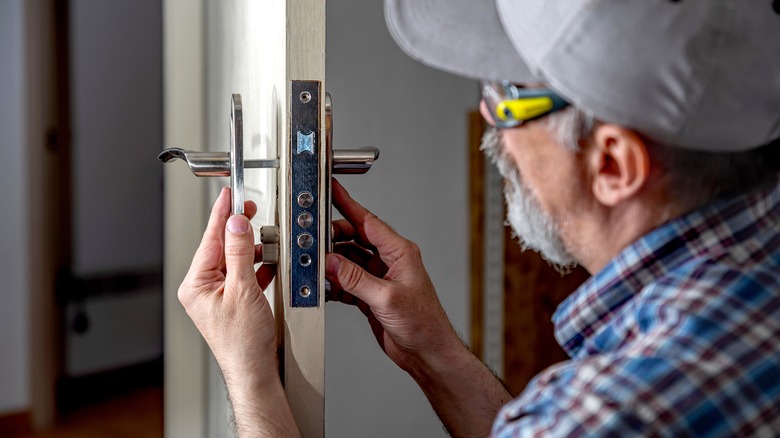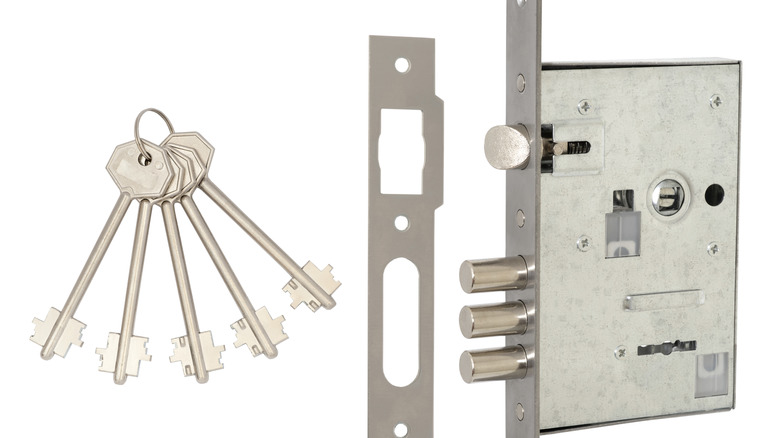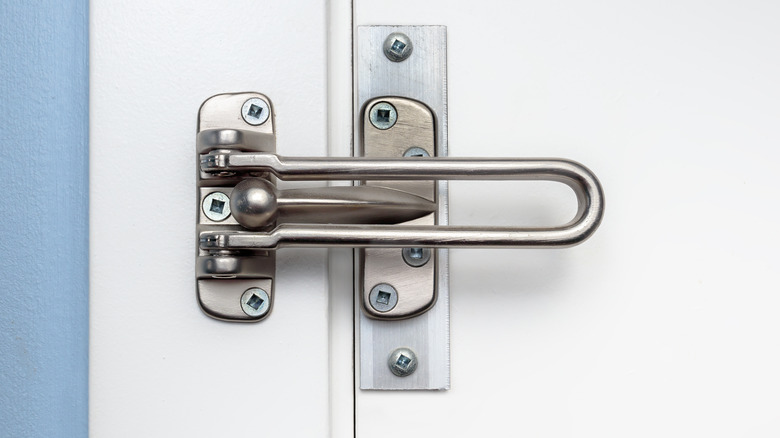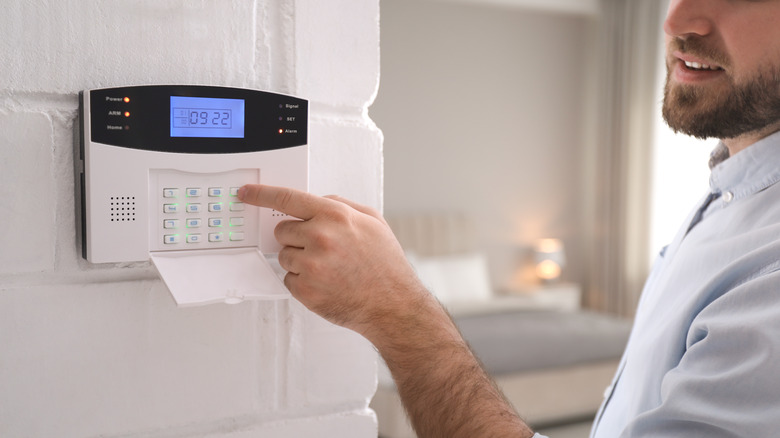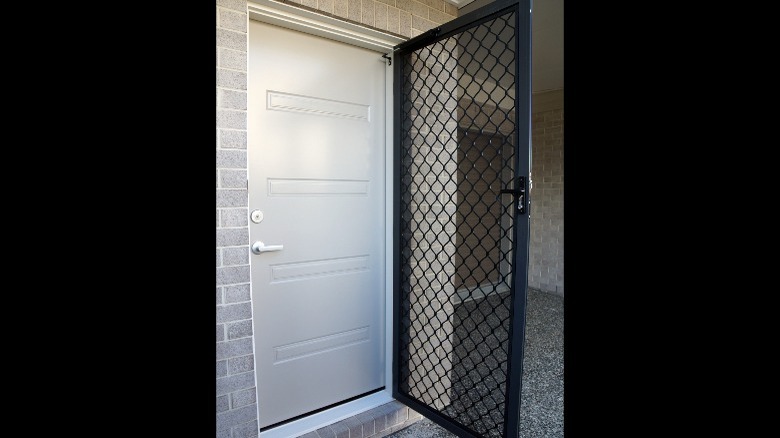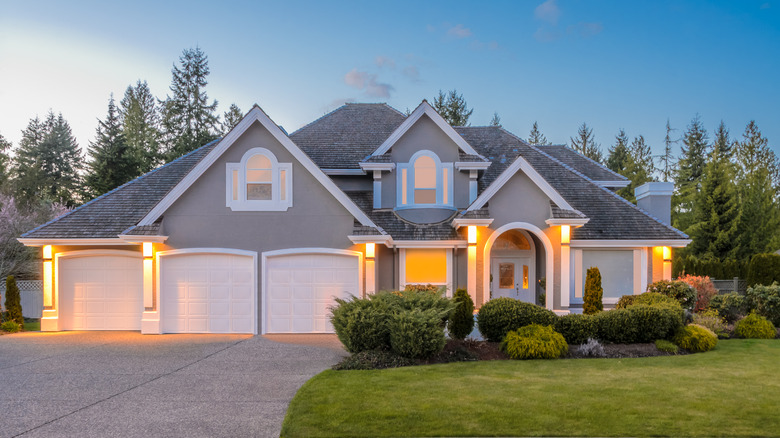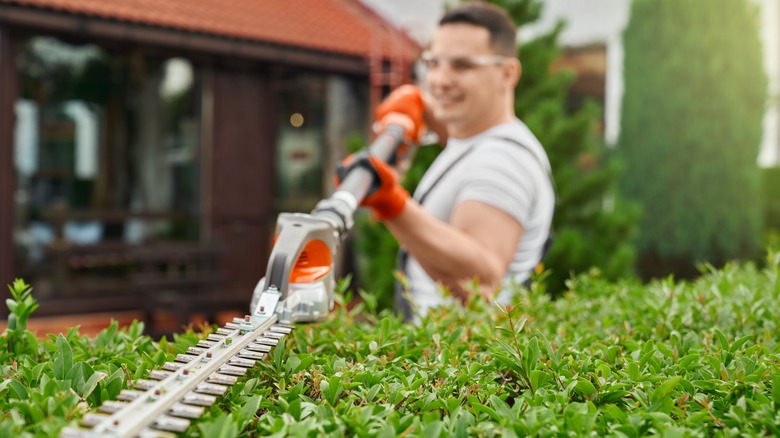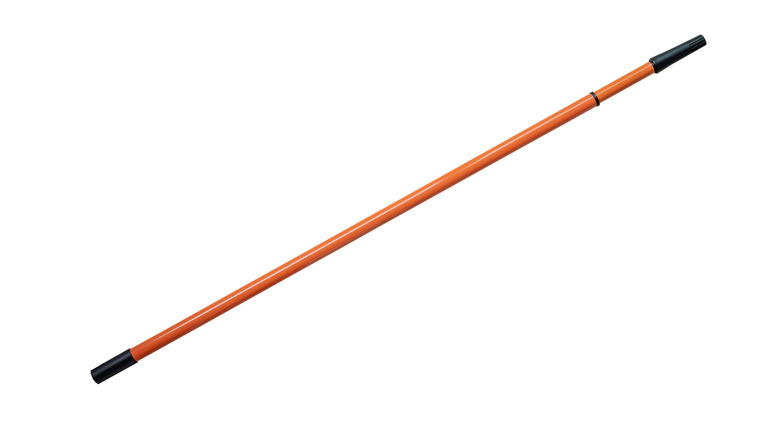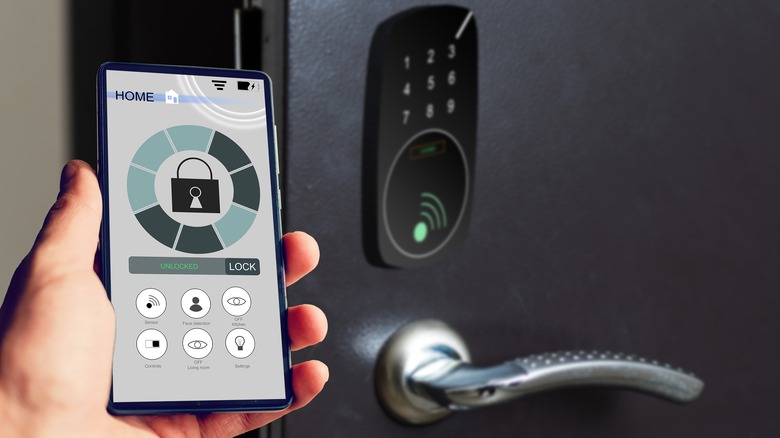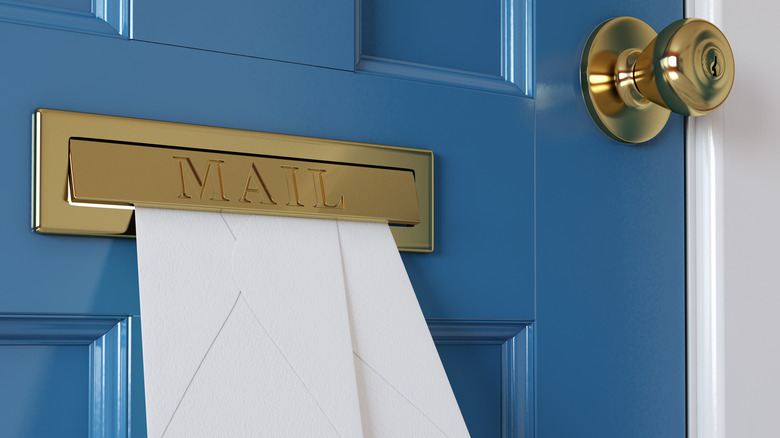How To Improve Front Door Security
Our front doors are the gateways to our homes. Because of this, improving front door security is important for keeping ourselves, our families, and our belongings from harm. According to Forbes, Americans spend over $20 billion each year on keeping their homes safe. So if you are wondering how to fix up your front door, you are not alone. There are many ways to keep your home safe, whether you want to perform renovations on your front door with a large budget, or just spend $20 and a few hours one afternoon to improve things.
No matter your budget, or the time you have to invest in improving your front door's security, your motivations are likely the same. You don't want people snooping around your front door who shouldn't be there or anyone uninvited coming inside your home. You want to keep your personal belongings from being taken and keep yourself and your family safe from harm. Here are the easiest ways to do that.
Install a solid-core door
When thinking about front door security, opt for a solid core or metal door, as they provide better resistance against forced entry compared to hollow doors. They also provide better sound insulation, ensuring privacy and preventing outsiders from overhearing conversations or detecting activity inside. Installing a solid core front door not only improves the door's physical security, but also enhances your peace of mind. This is because knowing your front door is a strong line of defense provides a sense of security for you and your loved ones. Plus, many solid core doors have improved fire resistance, which can delay the spread of flames during a fire emergency. This means you will have more time to evacuate.
To install a solid-core door, measure your door's frame and remove the existing door, including the hinges. Next, choose a solid core door that meets your security requirements. You can buy these at most home stores, including Home Depot, Lowes, etc. Before securing the door to the frame, you might need to trim it to fit the measurements of the door frame. If you aren't sure about this step, most hardware store employees will be able to help you. You might also need to hire a contractor if you're unsure about tackling it yourself.
Add a security camera
Installing a home security camera near your front door is an investment in proactive surveillance and peace of mind. You can see if someone is at your front porch when you are home alone and ensure no one takes your packages when you're on vacation. If the camera is in a visible place, it also acts as a crime deterrent because no one wants to be recorded and caught.
The first step is choosing the right camera. Look for features like high-resolution video quality, wide-angle coverage, night vision, and motion detection capabilities. This will give you the most coverage. Next, it's time to choose the perfect spot for your camera. Identify angles that offer a clear view of the front door, porch, and surrounding areas. Consider mounting the camera at a height that might capture the face of potential intruders. You can test this by recording yourself.
To install the camera, follow the manufacturer's instructions to securely attach the mount. It is typically easy to DIY this. Once the camera is mounted, connect it to the power source or Wi-Fi network, depending on the camera type. Wired cameras require routing cables discreetly along the wall or ceiling, while wireless cameras establish a connection to your home's Wi-Fi network.
Reinforce the door frame
Reinforcing the front door frame is a vital step in improving your front door's overall security. By reinforcing the front door frame, you significantly enhance its physical strength, resistance to kick-ins, and overall security. It deters potential intruders and provides peace of mind, knowing that your front door is fortified and better equipped to withstand forced entry attempts.
For the hinges, remove one or more screws and replace them with longer, sturdier screws that anchor into the underlying structure. Even if you are just renting, you should do this immediately upon moving in to protect yourself. Most doors only need screws that are about one inch long, but you can improve the safety of your door by going for two inches, as they will be harder to kick in. Another option for this is to use door frame reinforcement bars, which can be purchased online or at most hardware stores. They are installed around the lock area to add strength and prevent forced entry. These are both easy DIY options.
Upgrade the locks
It's common practice to replace the locks when you move into a new home. This is to make sure that any previous owners or tenants won't still have a working key to your place, However, it's also a good idea to assess the quality of your front door's locks even if you've been living somewhere for a while. Your front door's lock should protect you from common break-in methods, like lock picking, drilling, or bumping. Your lock should make your front door impenetrable. You can purchase locks online, or at most local hardware stores. When looking, choose high-quality locks that offer enhanced features like pick resistance, drill resistance, and bump key resistance. Look for locks with a high-security rating, such as those certified by organizations like ANSI/BHMA. Most of these features will be printed on the lock's packaging.
It is easy to upgrade your locks. With your strong, new lock in hand, simply use a screwdriver to unscrew the old lock from the door. Once unscrewed, you can pull it free, revealing a circular hole in the door with a small metal bit sticking through. That is the old deadbolt. You should be able to pull it out the side of the door. From here, take a look at the specific instructions from the new lock you purchased. However, it is typically as easy as popping the new deadbolt through the hole and screwing it in.
Use a strike plate and latch guard
A strike plate is the metal plate installed on the door frame where the latch or deadbolt engages when the door is closed. It acts as a crucial point of contact between the door and the frame. By using a heavy-duty strike plate with longer screws that anchor deep into the door frame, you create a stronger connection that can withstand forced entry attempts. This prevents the door from being easily kicked in or jimmied open. Similarly, a latch guard is a metal plate installed around the latch area of the door frame. It provides additional protection against forced entry by covering the gap between the door and the frame, making it more challenging for intruders to manipulate the latch. An adequately installed latch guard reinforces the latch's strength and prevents unauthorized access through tampering or picking.
Luckily, installing a scratch guard is simple. All you have to do is unscrew your old one and pop the new, more sturdy replacement in its place. If you find that your new guard is longer than your previous one, you will need to drill new holes in the door frame. You can fill the old ones with putty, so you aren't left with an eyesore.
Install a door viewer (peephole)
Installing a peephole is a relatively quick and affordable security improvement. It lets you see who is outside your front door without needing to open it. By enabling this visual verification of visitors, the peephole empowers you to make informed decisions about who might be outside. This is a great option for those who are not comfortable with digital doorbells or security cameras, or just want to do things the old-fashioned way. You can buy a peephole at most hardware stores. Be sure to purchase one with a wide-angle lens for a broader field of view. Also, make sure the peephole has a privacy cover to prevent anyone from looking in when not in use.
Typically, peepholes are installed at eye level, allowing you to easily see outside without straining or crouching. Consider the height of all household members for optimal placement, remembering that the youngest members of your household are likely to grow. Use a pencil to mark where you intended to install the peephole. Start drilling with a small pilot hole and gradually increase the size until it matches the required diameter for the peephole. You can always drill larger, but it's hard to fill in a hole that's too big. Then, insert the peephole into the drilled hole from the outside of the door, with the wider lens facing outwards. Attach the peephole's internal barrel and secure it tightly using the provided screws or fasteners.
Use a door chain or door limiter
Installing a door chain or a door limiter is a simple yet effective way to improve door security. This is because it only allows you to open the door partially, providing a controlled entry point. You can interact with visitors or delivery persons while maintaining a level of safety and control over access to your home because the door won't open all the way. Door chains typically consist of a chain and a mounting plate, while door limiters are typically metal bars that attach to the door and frame.
You can purchase them at most hardware stores. They only take a few minutes to install and are a quick DIY project. Typically, they are installed on the interior side of the door. Measure and mark the mounting points on both the door and the door frame. Ensure they align correctly when the door is closed and that the chain or limiter can be extended and secured without any obstructions. For a door chain, attach the mounting plate to the door frame using screws or fasteners, aligning it with the corresponding mark. For a door limiter, attach the bracket to the door frame and the metal bar to the door using screws or fasteners, aligning them with the corresponding marks.
Install a door alarm
A good door alarm provides an immediate audible alert when someone attempts unauthorized entry, acting as a strong deterrent to potential intruders. The loud noise not only alerts you but can also alert others in the vicinity, increasing the chances of detection. Additionally, a door alarm enhances security and helps to increase awareness and response time. It immediately notifies you of any unauthorized attempts, allowing you to quickly take action and contact the necessary authorities if needed.
Installing a door alarm is easy. If you purchase one from a company that also provides monitoring, they will likely come out and install it for you. However, if you plan on installing it yourself, it's not too hard. You will just need to determine the ideal placement for the door alarm based on the type of alarm you have. For magnetic contact alarms, one half is attached to the door while the other is attached to the frame. Motion sensor alarms, on the other hand, should be placed in a location that covers the area near the front door so they can catch anyone who comes past. Your alarm should come with installation instructions, but you will likely involve some sort of adhesive to stick the alarm to the wall, or installing brackets with screws in other cases.
Reinforce glass panels
While glass panels on our front doors are nice to look at, they can be a security threat. To avoid any accidents, you should reinforce them with a security film or install decorative security grilles to prevent easy breakage. These steps enhance the overall strength of your door by making it more resistant to break-ins. The security film makes it harder for potential intruders to quickly smash the glass and gain access to your home. If you are home, the added resistance provides valuable time for you to call for help, too. The presence of security bars also acts as a visible deterrent to burglars, signaling that your front door is well-protected. Intruders are less likely to target a door with reinforced glass panels, as it poses a greater challenge and increases their risk of detection.
It's easier to reinforce glass panels than you might think. The best way is probably to apply a security film or window security laminate to the glass yourself. This is easy to DIY and you can buy it online or at most hardware stores. The same can be said for security bars. You just drill them into the door frame, making it less than a one-afternoon job.
Install a security screen door
Having a screen door is better for front door security because it's just one more barrier between your home and the outside world. If you have your front door open to enjoy a breeze for temperature control or ventilation, you can keep your screen door closed so something (or someone) can't just wander in. It's also good to have for speaking with unexpected visitors to your front door, like salesmen or delivery drivers. You can open your front door and speak to the person through the screen without them having direct access to your home. It also keeps children and pets inside during these interactions.
It's easy enough to install a security screen door, even if you aren't great at DIYing. Just start by measuring the width and height of the door frame to ensure you get the right size. Clean the frame, attach the hinges to the door, and position the screen door in the frame, making sure it's centered and level. Secure the hinges, install the handle and latch mechanism, and test the door to ensure it opens, closes, and latches smoothly.
Update outdoor lighting
Thoughtfully-designed outdoor lighting improves visibility around your property at nighttime. Well-lit front pathways, entry points, and outdoor living areas like porches make it easier for everyone to navigate safely by minimizing the risk of accidents, like falls. A well-lit exterior serves also serves as a huge deterrent to potential intruders. Burglars prefer dimly lit areas where they can easily hide and go unnoticed. By illuminating your home's exterior, you eliminate hiding spots and create an environment that is less attractive to criminals. Bright lighting exposes their presence, making them more likely to be detected by you, neighbors, or security systems. If you have a surveillance system installed, the better-lit your front door is, the more likely you are to be able to identify trespassers on the footage.
It's easy to update your outdoor lighting. You can start by swapping out your front porch light to ensure it is strong and bright. Consider adding motion-activated lights to your driveway, or even small lamps down your front sidewalk, too.
Trim landscaping
By keeping the bushes near your front door trimmed, two things happen. One, you update your curb appeal by keeping things groomed, which is always a win. Two, you eliminate hiding spots for potential criminals. If your bushes are overgrown, someone can approach your home undetected. However, if you cut back the landscaping, it eliminates these hiding places, making it easier for you and others to see any suspicious activity or individuals near your front door.
In addition to this, properly trimmed bushes also contribute to natural surveillance. Neighbors, passersby, or security cameras have a clearer line of sight to your front door and the surrounding area when the bushes are well-maintained. This increases the chances of someone noticing any suspicious activity and can act as a deterrent to potential criminals. If you are looking for a quick win to updating front door security, go outside and trim your hedges.
Secure sliding doors
Sliding doors can be an easy weak spot for potential intruders to target. If you have a sliding door as the entry to your home, take a few extra steps to secure it. Place a sturdy security bar or rod on the track of the sliding door. This creates an additional physical barrier that prevents the door from being forced open, even if the lock is compromised. Choose a bar or rod made of strong materials like steel and ensure it fits tightly within the track.
You can also install a high-quality sliding door lock specifically designed for sliding glass doors, like pin locks, that can reinforce the door's locking mechanism and prevent it from being easily forced open. Consider using a track lock or locking device to secure the sliding door track. These devices prevent the door from being lifted or forced out of the track, making it more resistant to break-ins.
Use smart locks
With smart locks, you no longer need to rely on traditional keys that can be lost or stolen (and then used to break in.) Instead, you can access your home through methods like a password-protected smartphone app, keypad, fingerprint scanner, or voice commands. But smart locks are not only convenient, they also offer enhanced access control. You have complete control over who can enter your home and when.
Through the smart lock's app or website, you can easily grant or revoke access permissions for family members, friends, or service providers, even when you're not physically present. This eliminates the need for physical key exchanges for your front door and significantly reduces the risk of unauthorized entry, making your home more secure. There are lots of different smart lock brands, but the installation process typically remains the same. Much like installing a traditional lock, you must only remove the old lock with a screwdriver, then follow the instructions on the smart lock packaging to install the replacement and connect it to the internet.
Reinforce mail slot or letterbox
If you have a mail slot in your front door, reinforce it with a metal sleeve or box to prevent unauthorized access. Without doing so, you have a gaping hole (literally) in your front door's security. Reinforcing this vulnerable part of your door is an important part of enhancing home safety because it helps with theft prevention and protects sensitive information that comes through the mail.
One way to reinforce your mail slot is by installing an interior steel security box or cage. These sturdy devices are designed to fit over the mail slot and prevent individuals from reaching into your home. By installing one you significantly reduce the risk of mail theft or tampering. If you prefer, you can also use a mail slot hood instead. This attachment covers the exterior portion of the mail slot, preventing anyone from peeking into your home or tampering with the lock mechanism. The hood also acts as a shield against inclement weather, protecting your mail from rain, snow, or other elements. Finally, you can choose a slot that only opens one way at a time. Meaning you can push mail through, but it cannot be pulled or pushed open to look inside.
